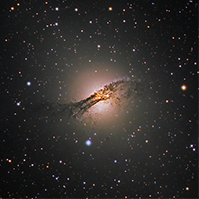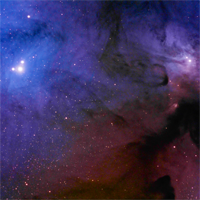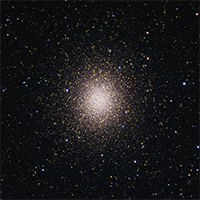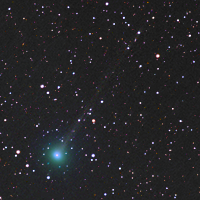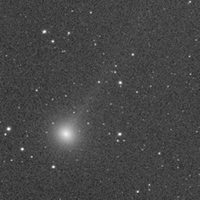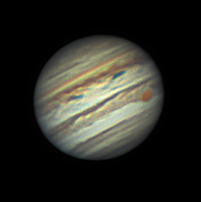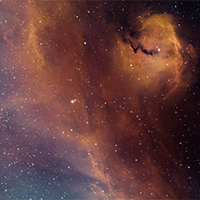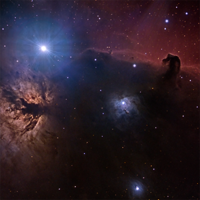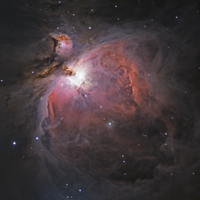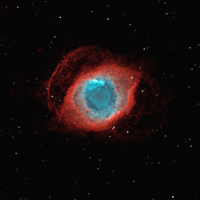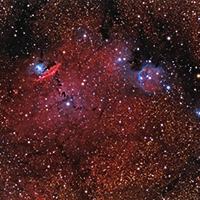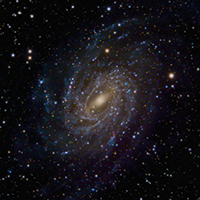A collection of astronomical photos taken by Adam Lundie at Eatons Hill Observatory.
Equipment Used:
- Telescope 1: Celestron 1100 Edge HD
- Telescope 2: Skywatcher Esprit 120ED
- Telescope 3: Skywatcher Black Diamond 80ED
- Mount: Skywatcher EQ8-Rh Pro
- Imaging Cameras: QSI 683ws-8 Monochrome, ZWO ASI290MM
- Filters: Astrodon Tru-Balance Gen 2 LRGB, Astronomik CLS-CCD, 6nm Hα, 6nm SII, 6nm OIII, ProPlanet 742nm IR-pass
- Guide Camera: Starlight Xpress Lodestar X2
- Guiding Optics: Skywatcher Evoguide 50ED, Innovations Foresight ONAG, Starlight Xpress Large Format Active Optics
- Focusers: Starlight Instruments Feather Touch + Posi Drive Motor
|
|
||
Recent Work:
12-May-2017
Centaurus A is a peculiar galaxy discovered in 1826 by Scottish astronomer James Dunlop in Parramatta, Australia. It is ~10-16 million light years away and its lenticular with dust lanes hybrid appearance is the result of a merge of two galaxies.
27-Apr-2017
Inside the Rho Ophiuchi cloud complex live the star clusters IC4604 (left) and IC4603 (right). Heading towards the bottom of the image shows the transition from blue reflection nebulae to red emission nebulae. Interspersed are dark absorption nebulae, blocking the light from the stars behind them.
21-Apr-2017
NGC2835 is a small, faint spiral galaxy in the Hydra constellation. It was probably too small and faint to attempt from the suburbs of Brisbane, but I persisted through the very few clear nights I could get over the last 6 weeks.
19-Apr-2017
Omega Centauri (NGC 5139) is the largest globular cluster in the Milky Way at a diameter of roughly 150 light-years. It is estimated to contain approximately 10 million stars.
16-Apr-2017
C/2015 ER61 is a comet from the inner Oort cloud approximately 8-20 metres in diameter. By April 19th 2017 it will reach its closest point to Earth, and on May 10th it will reach its closest point to the Sun. It will not be back again for another 9000 years.
10-Apr-2017
Comets move fast. So fast that you cannot use stars to guide your telescope. With an on-axis guider I was able to lock the telescope on to the fuzzy comet. This animation shows how fast the comet moves over a 30 minute period.
04-Apr-2017
Jupiter is back in the evening skies. This is my first time playing with a new high speed astronomy camera, the ZWO ADI1600MC.
02-Feb-2017
NGC 2736, known as the Pencil Nebula is a part of the supernova remnants from the Vela pulsar, 815 light years away.
19-Jan-2017
The Seagull Nebula a region of nebulosity that lies 1820 light years away, along the border between the constellations Monoceros and Canis Major. It includes the neighboring regions of star clusters, dust clouds and reflection nebulae centered around IC 2177.
04-Jan-2017
Adjacent to the bright blue supergiant star Alnitak shines the ionised hydrogen of the Flame and Horsehead nebulae.
02-Dec-2016
The Orion Nebula is one of the brightest nebulae in the sky, visible to the naked eye. It is seen as the fuzzy middle star in the sword of Orion. The nebula is 1344 light years away and is one of the closest star forming regions to Earth.
16-Aug-2016
I've already done the Helix Nebula in natural colour, so I've imaged it again in narrowband. Lots of H-alpha and Oxygen-III, but barely any Sulfur-II.
09-Aug-2016
Next to the Lagoon Nebula, there lies the often overlooked collection of absorption, reflection and emission nebulae: NGC 6559, IC 1274, IC 1275, IC 4684, IC 4685, Barnard 303, LDN 227, LDN 213, and planetary nebula PN M 1-41.
03-Aug-2016
Almost everyone has a go at imaging the Trifid nebula, which is composed of 3 different type of nebulae; emission, reflection, and absorption. When I noticed some faint red glow in the background, I decided to try integrating some long hydrogen emission line frames to see if I could get any structure out of it. I'm quite happy with the resulting background structures!
11-Jul-2016
Caldwell 101 is a spiral galaxy about 31 million light-years away, tilted towards our line of sight. It is thought to be one of the most Milky Way-like spiral galaxies in our immediate vicinity. It also has at least one distorted companion galaxy similar to the Magellanic Clouds.
